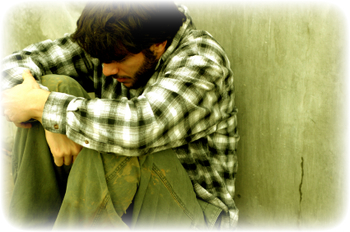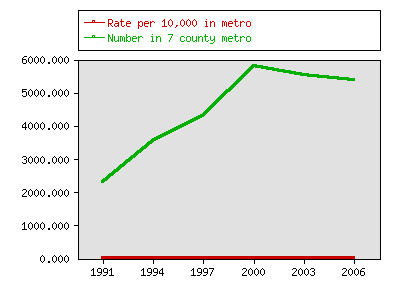Indicator 26: Homelessness


Goal: All people will be welcomed, respected and able to participate fully in Minnesota's communities and economy.
Rationale: This indicator deals with one of the most basic human needs – a safe, stable place to live.
About this indicator: Though homelessness in the 2000s has remained fairly stable, levels have risen substantially since the 1990s. The 2009 figures are not yet available. Data is available once every three years from a survey conducted by Wilder Research. The survey looks at people living without shelter in the 7-county Twin Cities area. In 2006, the rate of homelessness in the Twin Cities was 19.4 per 10,000 population, similar to the 2003 rate of 20.4. The number of homeless people has more than doubled since 1991, when the survey was first conducted.
Statewide, Wilder estimates the number of homeless Minnesotans on any given night was between 9,200 and 9,300.

For comparison: Compared to earlier years, the 2006 survey found higher levels of mental illness and cognitive problems. There were more ex-offenders. Fewer homeless people were newcomers to Minnesota.
Things to think about: The survey is done at a single point in time. Over a year, the number of people who experience homelessness for at least a short period is much greater.
African Americans and American Indians are greatly overrepresented in the homeless population.
Experience of domestic abuse is common among women in shelters.
Sources:
- Wilder Research http://www.tccompass.org/
- Overview of Wilder homeless survey, http://www.wilder.org/fileadmin/user_upload/research/Homelessoverview2006_3-07.pdf
Related 2002 Milestones indicator:
Local data:




